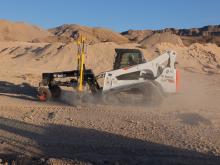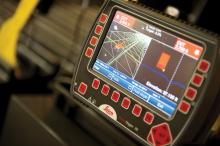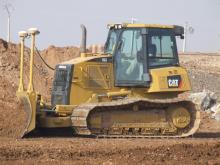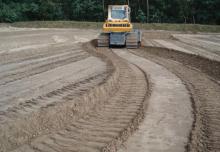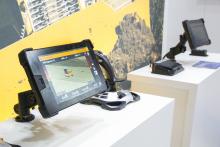In transportation, the potential for autonomous vehicles that operate without the need for a human driver is now being evaluated. A string of development projects are underway by an array of automotive and technology companies, sometimes in partnership with each other.
In the mining sector, autonomous machines have been operating in underground facilities for 20 years and nearly as long in surface operations too. It should be no surprise then that research and development projects are underway at present to deliver autonomous construction machines. As a leader in machine control technology, it is understandable that
The company has been running trials with autonomous soil compactors and autonomous bulldozers. These are research projects and the machines are not suitable yet for market, but they do point the way ahead for equipment in the future.
There is a potential need for autonomous machines, with a growing shortage of operators being a key factor. This is particularly apparent with some categories of machines, bulldozer and graders specifically.
Trimble says that some semi-autonomous features could be available on the market by 2020, with limited market release of fully-autonomous equipment following around five years later.
However, the use of autonomous machines would face legal challenges, with new regulations possibly having to be developed. But the application of autonomous machines in the mining sector shows how legislation could be applied in the construction sector, with equipment operating in restricted areas. The suitable applications would be on large sites such as land reclamation or airport construction operations, where autonomous machines could operate safely away from personnel. It will be rather longer until autonomous construction machines are sufficiently proven to be operated in urban areas.
Rather more down to earth is Trimble’s new machine control package for the grader market. Available now, the Earthworks for Motor Graders system uses the same inertial measurement units (IMUs) already offered for use on dozers and excavators. These three units are fitted into the grader and measure movement in all three planes. The IMUs monitor machine orientation, and position-sensing hydraulic cylinders monitor blade position. Because the system is integrated into this machine, this also means that there is no need to remove components at the end of each shift.
The IMUs are said to provide far more accurate position data than previous machine control packages and according to Trimble, the firm expects efficiency gains of up to 15% over its own earlier generation GCS900 system (itself said to be highly accurate).
The first of the Earthworks GO! offerings is a 2D package designed for use with compact loaders and skid steer loaders from
The Earthworks GO! package is designed to provide accurate grading or dozing using a simple, portable package. The system also runs on Android or iOS smartphones, further boosting its usability and Trimble says that it is also simple to use.
The customer can fit the package to a skid steer loader or compact loader and download the app to use on a smartphone or tablet. Highly versatile, the system can be used in an array of duties such as general construction and site preparation for grading flat and simple slopes. The package uses conventional laser technology for real-time position data so that an operator can cut to grade more quickly.
According to Trimble, this package is quick to learn and can boost productivity by up to 20%. The package comes with software that shows the user how to install and set up the system. It has been designed for local small site contractors and owner-operators who may not be familiar with machine control technology, so has been tailored to make it easy to use.
Trimble says that users can save their machine profiles to the package as this means the grading attachment only needs to be set up once, making it easier to move the system between machines.

